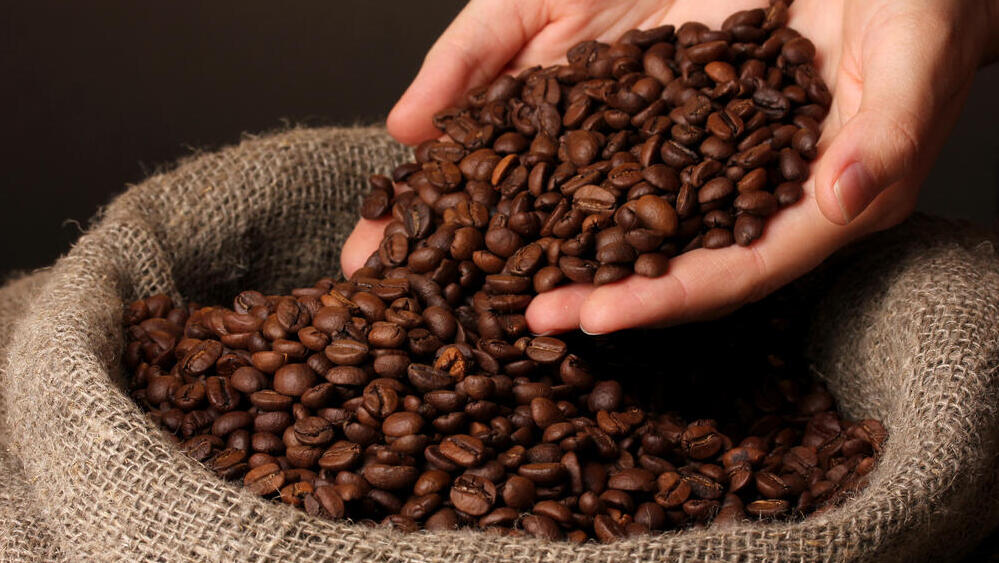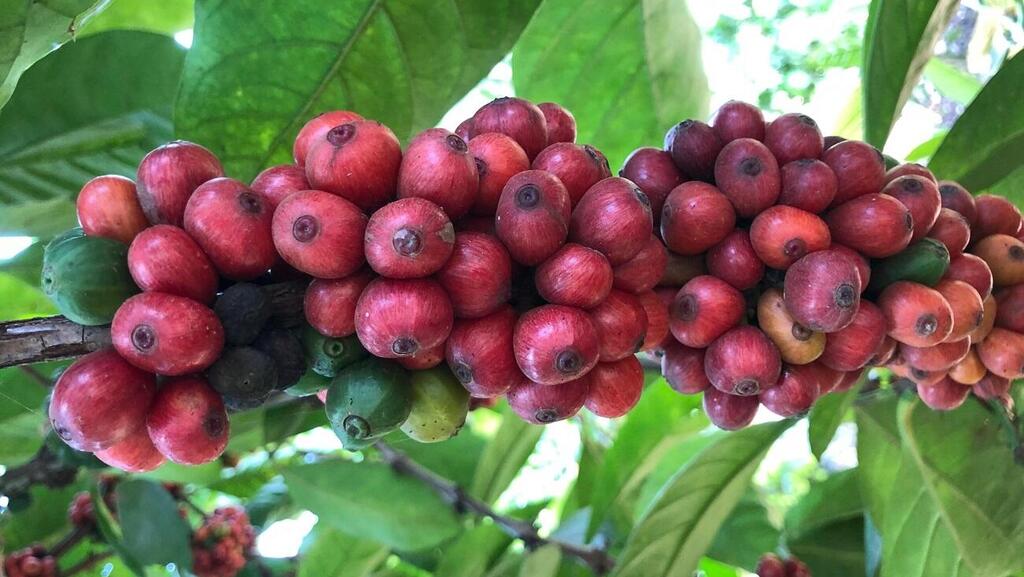Getting your Trinity Audio player ready...
Legend has it that coffee was first discovered a few hundred years ago by an Ethiopian shepherd. The shepherd noticed that when his goats ate from a particular plant, they had trouble falling asleep at night.
In time this plant was termed “coffee,” and its consumption became part of the daily life of millions of people worldwide. One of the main reasons that people drink coffee is to wake up, whether it be in the morning or in the middle of an exhausting work day.
When we consume caffeine, we introduce a molecule into our body that competes with the molecule adenosine for the binding to certain receptors in the brain. Normally when these receptors detect high levels of adenosine, they send a command which causes brain activity to slow down, causing us to feel fatigue and drowsiness.
Due to structural similarities between caffeine and adenosine, caffeine can “take” the place of adenosine in binding these receptors, thus preventing the feeling of fatigue.
Despite the increased alertness that accompanies drinking coffee, and perhaps because of it, many people choose to drink decaffeinated coffee, which accounts for about ten percent of the world’s coffee consumption. But is “decaffeinated” coffee really caffeine-free? How is the caffeine separated from the coffee, and is this process dangerous to our health?
Coffee beans contain over 400 different molecules that give coffee its characteristic taste and smell. When decaffeinating coffee, the greatest challenge is removing the caffeine from the beans while leaving inside as many molecules of flavor and aroma as possible.
Ludwig Roselius, a German coffee merchant, registered the first patent describing a method for the removal of caffeine from coffee, as early as 1906. According to his method, the coffee beans must be soaked in salt water or acid, steamed to open their pores, and then washed in the chemical solvent benzene.
Roselius used benzene mainly to effectively remove the caffeine from the coffee without harming other flavor and aroma substances. Roselius’s method is not used today, mainly due to the fact that benzene is a carcinogen, even at low levels of exposure.
Somewhat surprisingly, the most common method for removing caffeine from coffee is very similar to Roselius’s method. The main difference is in the solvent used. After steaming the coffee beans, they are washed in methylene chloride or ethyl acetate (a substance naturally found in apples, bananas, and coffee), which bind coffee well.
The beans are then soaked in water, and the remaining solvent is removed by evaporating the coffee at high temperatures (methylene chloride evaporates at about 40o Celsius and ethyl acetate at 77o Celsius - 104o Fahrenheit and 170o Fahrenheit, respectively). This process is usually repeated several times, until about 96 percent of the caffeine is removed from the coffee.
It is important to note that although the FDA defines methylene chloride as a dangerous substance when exposure occurs at a level that exceeds 10 parts per million (ppm) of it in food, after the washing and the steaming, a concentration of less than 1 part per million of methylene chloride usually remains in the decaffeinated coffee, an amount that is not considered dangerous at all for consumption.
If we add to this the fact that the beans will subsequently be roasted at a temperature of over 150o Celsius (302o Fahrenheit), the fear of finding residues of chemical solvents in the decaffeinated coffee decreases even more.
In 1967, the German chemist Kurt Zusel noticed that caffeine could be separated from coffee by using carbon dioxide, when the carbon dioxide is pushed to a state above its critical temperature and pressure.
This state of matter, termed “supercritical fluid,” is one at which a substance exhibits both gas and liquid properties simultaneously, and carbon dioxide in this state is dense like a liquid but can pass through tiny openings like a gas.
Based on these properties, Zusel developed a unique method: the coffee beans are soaked in a pressure tank with hot water and steam to open their pores. Then, carbon dioxide is passed through the coffee beans in a supercritical state, which selectively and effectively absorbs the caffeine thanks to its gas-like property of penetrating through tiny pores.
The caffeine-bound carbon dioxide exits to a separate tank, where it is cooled to a temperature of 25o Celsius (77o Fahrenheit) and converted into a liquid. The liquid carbon dioxide is then passed through a unique filter, which binds only the caffeine.
Now, the remaining carbon dioxide is returned to a supercritical state, which can be used once more to remove the caffeine from the beans. This method can be used to remove between 96 and 98 percent of the caffeine in the coffee and better preserves the taste and smell of the coffee when compared to the chemical solvent method.
Another method for separating caffeine from coffee is based only on water and an activated charcoal filter, similar to the filter in home water filtration systems. Although this method doesn’t use chemicals, it is less selective for caffeine, and thus only 94 to 96 percent of the initial amount of caffeine in the beans is removed.
Different from the methods we have described so far, Japanese researchers have reported that they were able to produce a special variety of coffee beans, with a caffeine content 70 percent lower than that of regular coffee beans, with the help of genetic engineering.
Although this development isn’t nearly as efficient as commercial decaffeination processes, it is an exciting idea, which may be commercialized in the future. Other researchers have identified a rare variety of Arabica coffee beans in Ethiopia which are naturally very low in caffeine. In the future it may be possible to crossbreed this variety with commercial varieties of Arabica, the most common variety of coffee.
After understanding how caffeine can be removed from coffee, we will try to understand how decaffeinated coffee impacts our health. First, it is essential to note that despite its name, decaffeinated coffee is not entirely caffeine-free.
For instance, while a regular cup of coffee contains between 70-150 milligrams of caffeine (the exact amount depends on the variety of the coffee beans, the method by which they were roasted, etc.), a cup of “decaffeinated” coffee still contains about 5 mg of caffeine (here, too, the exact amount may vary).
If so, the effects of decaffeinated coffee on our health may not be so different from the effects of regular coffee, which aren’t very noticeable - for better or for worse..For example, a comprehensive study that compiled results from 36 studies, encompassing over a million participants, found no direct link between the consumption of decaffeinated coffee and the risk of cardiovascular disease.
Another study, which examined the relationship between both regular and decaffeinated coffee consumption and the chance of developing a certain type of kidney cancer, did not indicate a relationship between the consumption of decaffeinated coffee and the chance of developing this type of cancer. From these two examples, it appears that from a health perspective, drinking decaffeinated coffee is not fundamentally different from drinking regular coffee.
So is it healthier to drink decaffeinated coffee? According to the World Health Organization, it is recommended that pregnant women do not consume over 300 mg of caffeine per day, an amount found in approximately 2-3 cups of coffee.
This guideline does not require switching to decaffeinated coffee. Interestingly, although there is no clear guideline to avoid drinking caffeinated coffee for health reasons, many consumers choose to do so at some point on their own accord.
A comprehensive study in San Diego, California, found that 80 percent of the study’s participants switched to drinking decaffeinated coffee around the age of 50 for health reasons, but only 10 percent did so under the advice of a physician.
If you like the taste and smell of coffee but don’t like the increased feeling of alertness that drinking coffee causes, switching to decaffeinated coffee may be a good choice for you. There seems to be no real reason to fear a particular health issue from drinking decaffeinated coffee, but there is also no reason to expect health benefits from drinking it.
If you’re looking for ways to reduce your chances of developing heart disease, diabetes, or cancer, exercising and eating a balanced diet would be a better way to go. And yes, it’s perfectly fine to wind down from your exercise with a cup of coffee. Even decaf.








